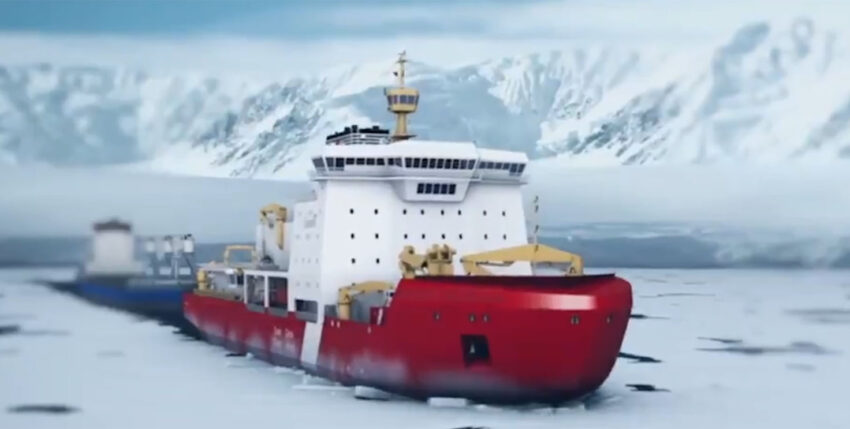The Minister responsible for the Canadian Coast Guard, Bernadette Jordan, has announced that her country will acquire two new icebreakers as part of the National Shipbuilding Strategy. They will replace the largest icebreaker currently in service, the CCGS Louis S. St-Laurentwhen it is retired as planned in 2030. The new ships will also give the coastguard new capabilities, as the future units will be larger and more powerful than their predecessors. This will enable longer operations to be carried out in more northerly regions. A length of around 150 metres with a width of 28 metres is planned. The cruising range will be 30,000 nautical miles, with a maximum speed of 18 knots. A crew of up to 100 people is expected. In addition to the typical tasks for an icebreaker, scientific research will also be carried out on board and the indigenous population in the north of the country will be supported.
The decision to build the two icebreakers has strong political dimensions. On the one hand, it will deliberately preserve or create jobs in Canada. There is talk of 300 jobs at Canadian shipyards and up to 2,500 in the supply industry. With the National Shipbuilding Strategy, Canada had already decided to invest 17.49 billion Canadian dollars in 2019. The money is to be used to procure up to 18 smaller and larger ships for the Coast Guard to replace older units. This extensive construction programme is intended to support a large number of large and small shipyards in the country. The costs for the two new ships will now be added to this. When awarding the contracts, it is evidently also important that the money is distributed evenly. Seaspan Shipyards in Vancouver is to build one unit, while Davie Shipbuilding of Lévis in Quebec is responsible for the other. This means that companies from the Pacific and Atlantic coasts would be equally involved. They are expected to award as many contracts as possible to national subcontractors.
Canada's Coast Guard currently operates a fleet of 18 icebreakers of various sizes, making it the second largest fleet in the world.
Text: mb; Graphic: Canadian Coast Guard










